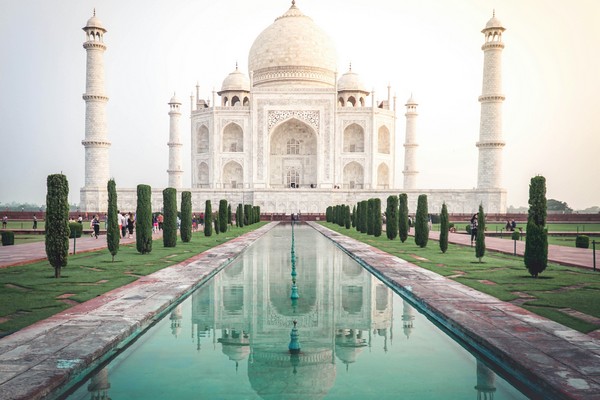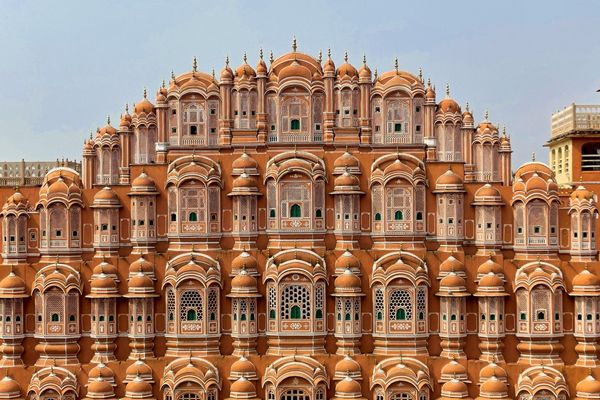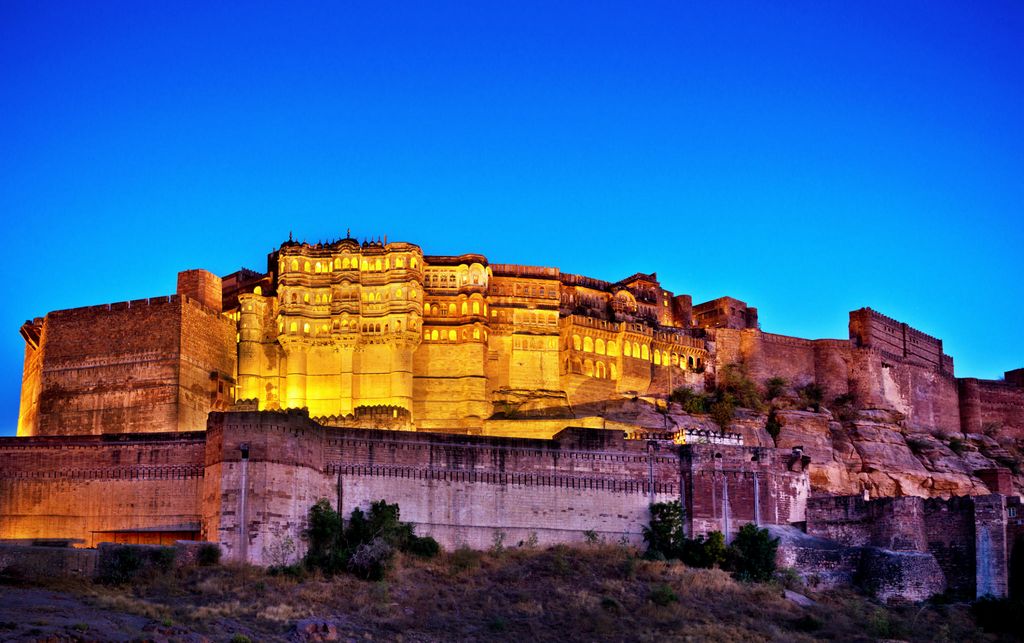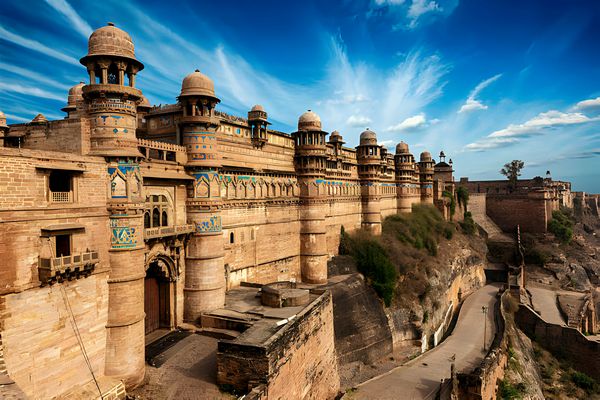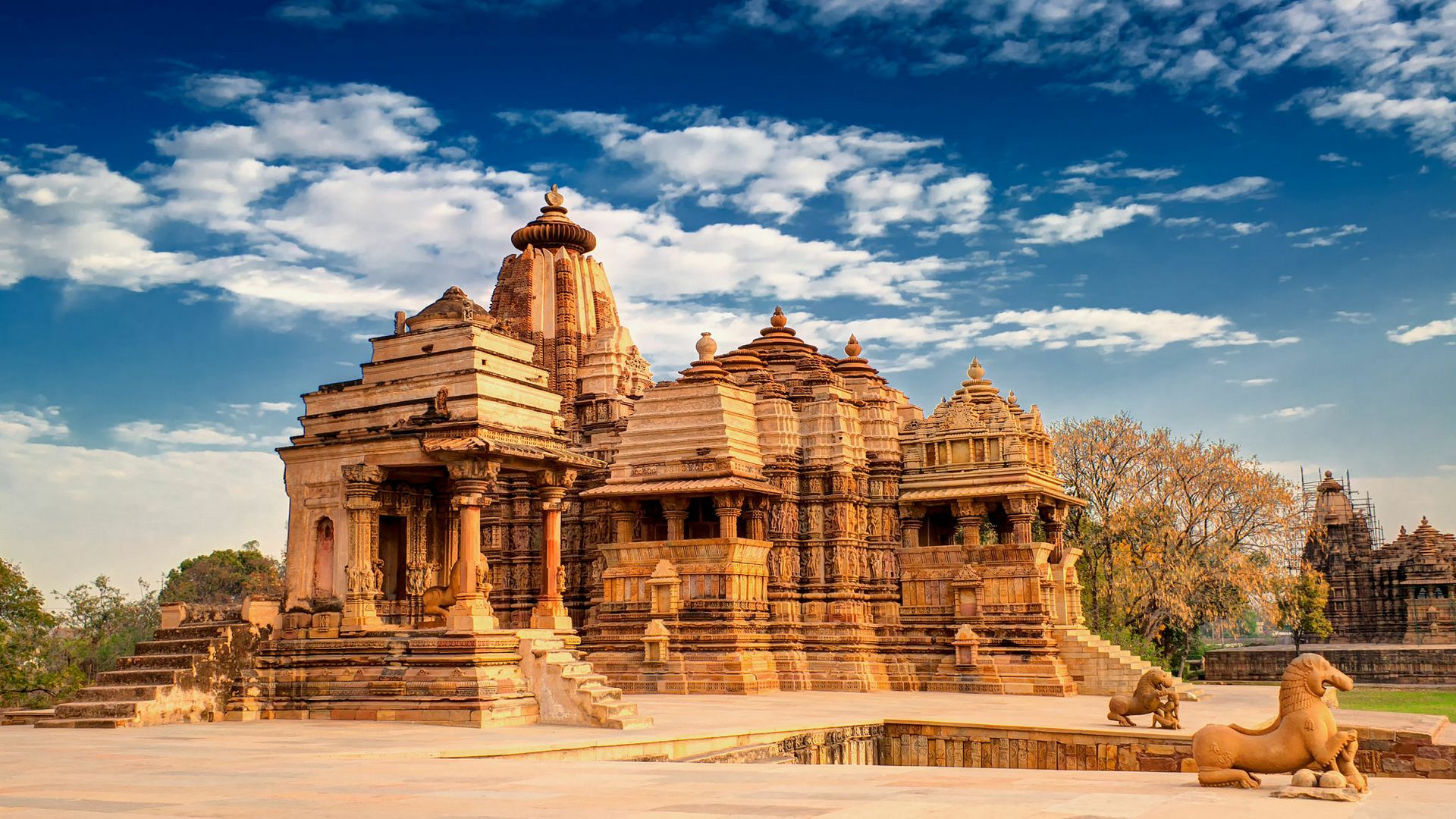
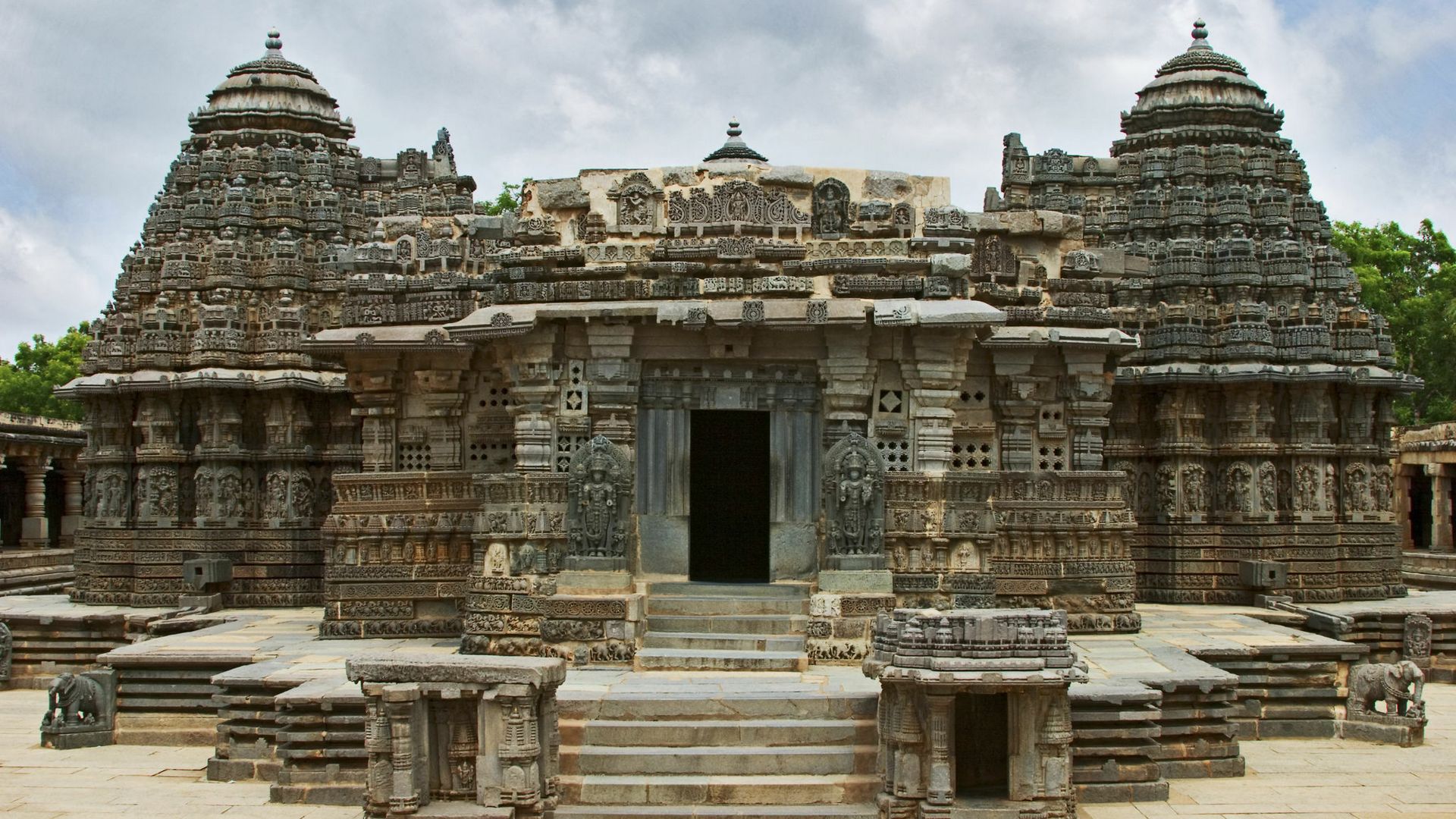
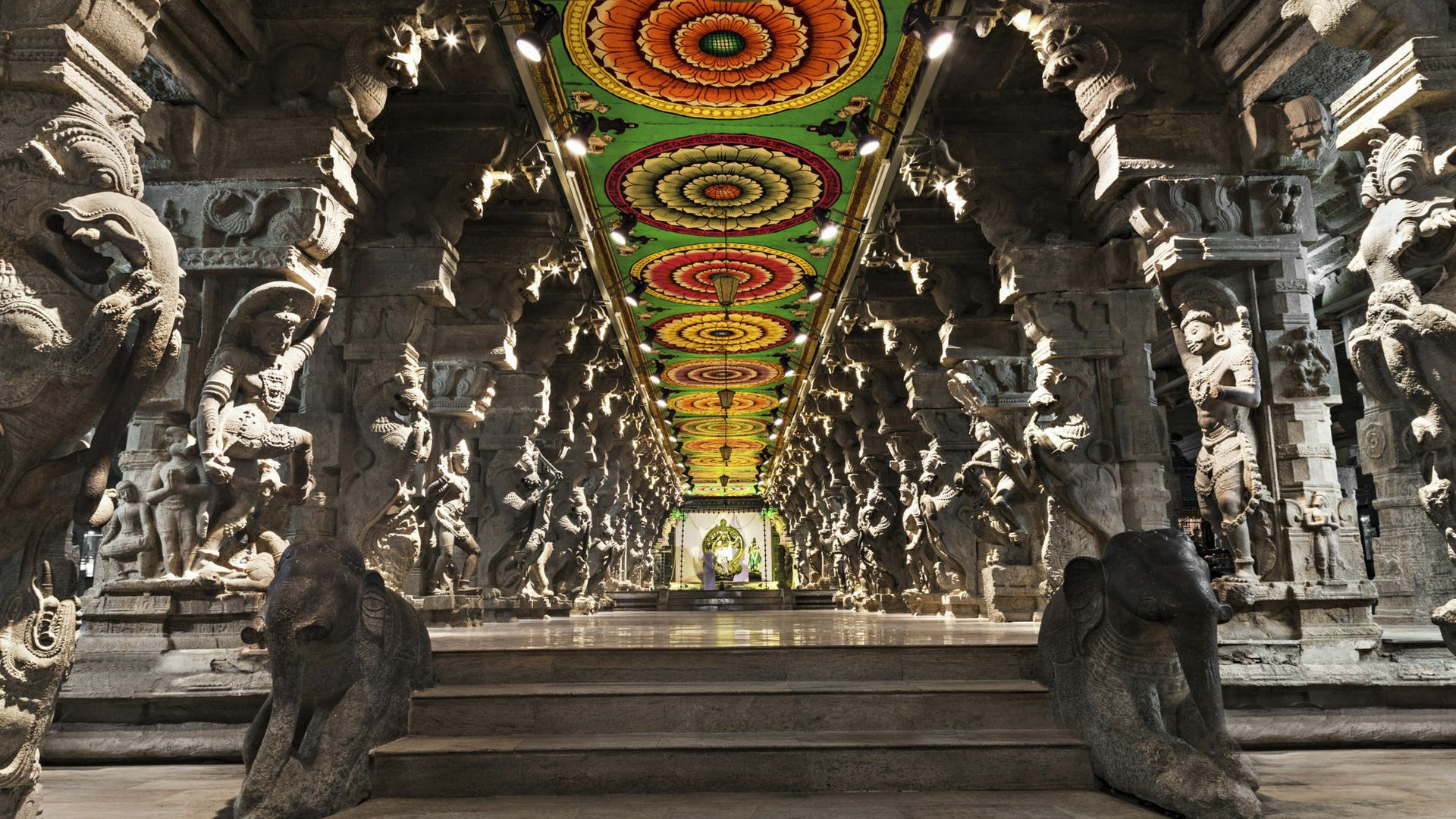
Top 10 Historical Temples In India To Visit
About Historical Temples in India
India is a land steeped in history and spirituality, boasting a plethora of ancient temple sites that showcase architectural brilliance and cultural richness. The Konark Sun Temple in Odisha stands as a testament to the Sun God, renowned for its intricate carvings and the famous chariot-shaped structure.
In Tamil Nadu, the Brihadeshwar Mahadev Temple in Thanjavur is a marvel of Chola architecture, featuring a towering vimana and a massive Nandi sculpture. The Khajuraho Temples in Madhya Pradesh are a UNESCO World Heritage Site, known for their explicit and intricate erotic sculptures, reflecting the artistry of the Chandela dynasty.
Mahabalipuram, also in Tamil Nadu, is home to ancient rock-cut temples and exquisite shore temples, showcasing Pallava artistry. The Jageshwar Temple in Almora, Uttarakhand, is a cluster of 124 temples dedicated to Lord Shiva, set amidst a serene Himalayan backdrop.
The Dilwara Temples in Mount Abu, Rajasthan, are a marvel of marble craftsmanship, reflecting Jain architectural brilliance. The Virupaksha Temple in Hampi, Karnataka, is a UNESCO World Heritage Site, standing as the focal point of the ancient Vijayanagara Empire.
Ramanathaswamy Temple in Rameswaram, Tamil Nadu, is one of the twelve Jyotirlinga shrines, attracting pilgrims for its sacred significance. The Meenakshi Temple in Madurai is a magnificent Dravidian masterpiece, adorned with towering gopurams and intricate sculptures.
The Ranakpur Temple in Rajasthan is an architectural gem of marble, featuring 1,444 intricately carved pillars. These historical temples in India offer a glimpse into the country’s rich cultural and religious heritage, inviting visitors to explore the mystique and grandeur of its ancient past.
Highlights
- India's rich heritage showcased in myriad historical temple sites
- Konark Sun Temple: Ancient marvel dedicated to sun god, Surya.
- Brihadeshwar Mahadev Temple: Grand Dravidian architecture by Chola dynasty.
- Khajuraho Temples: Renowned for explicit erotic sculptures and spirituality fusion.
- Mahabalipuram: Ancient rock-cut temples showcasing Pallava artistry and maritime history.
- Jageshwar Temple: Sacred Himalayan complex dedicated to Lord Shiva.
- Dilwara Temples: Rajasthan's stunning marble showcase of Jain tradition.
- Virupaksha Temple: UNESCO site reflecting Vijayanagara architectural splendor.
- Ramanathaswamy Temple: Rameswaram's religious significance with grand corridors.
- Meenakshi Temple: Madurai's Dravidian masterpiece with vibrant sculptures.
Top 10 Historical Temple Sites
Embarking on a spiritual journey through India’s historical temple sites unveils a captivating tapestry of spirituality and architectural marvels. The Konark Sun Temple in Odisha, with its chariot-shaped structure, and the Brihadeshwar Mahadev Temple in Thanjavur, a Chola masterpiece, beckon travelers on enchanting temples in India tours. The Khajuraho Temples in Madhya Pradesh boast intricate erotic sculptures, creating a unique blend of artistry and spirituality for those on spiritual tours in India.
Mahabalipuram’s rock-cut wonders and shore temples in Tamil Nadu mesmerize with Pallava artistry, offering a glimpse into the rich cultural heritage of the region. Uttarakhand’s Jageshwar Temple, nestled amidst the Himalayas, exudes tranquility and offers a serene stop on spiritual tours in India. The Dilwara Temples in Rajasthan showcase exceptional Jain craftsmanship, providing a spiritual oasis for those exploring temples in India.
The Virupaksha Temple in Hampi, a UNESCO World Heritage site, echoes the glory of the Vijayanagara Empire, making it a must-visit destination for enthusiasts of spiritual tours in India. Rameswaram’s Ramanathaswamy Temple and Madurai’s Meenakshi Temple stand as spiritual gems, reflecting the deep-rooted religious traditions of South India.
Rajasthan’s Ranakpur Temple, adorned with 1,444 pillars, stands as a testament to intricate marble artistry and adds a touch of architectural brilliance to any temples in India tour. These diverse and sacred sites collectively narrate India’s cultural and religious saga, making spiritual tours in India a transformative and enlightening experience.
Konark Sun Temple
The Konark Sun Temple, a UNESCO World Heritage Site in Odisha, India, stands as a captivating marvel of ancient architecture. Built in the 13th century by King Narasimhadeva I, the temple is a mesmerizing ode to the sun god Surya. Its intricate design features a colossal chariot with 24 intricately carved wheels, symbolizing the passage of time. Visitors are enthralled by the exquisite sculptures depicting mythological scenes and celestial beings. The temple’s unique positioning allows the first rays of the sun to illuminate its sanctum, creating a breathtaking spectacle. A visit to Konark promises a journey through history, spirituality, and artistic brilliance.



Best Time To Visit Konark Sun Temple
The best time to visit the Konark Sun Temple is during the winter months, from October to March. The weather is pleasantly cool, making exploration of this architectural marvel more enjoyable. During this period, the temperature ranges from 10°C to 30°C, providing a comfortable and inviting atmosphere for tourists. The winter months also coincide with various festivals and cultural events in the region, adding to the vibrant experience. Additionally, the reduced humidity during winter ensures clear skies, enhancing the visibility of the intricate carvings on the temple. Overall, visiting Konark Sun Temple in the winter months offers an optimal combination of weather and cultural vibrancy.
How To Reach Konark Sun Temple
Air
The nearest airport to Konark is Biju Patnaik International Airport (BBI) in Bhubaneswar, which is approximately 64 kilometers away from Konark. From the airport, you can hire a taxi or take a bus to reach Konark.
Train
The nearest railway station to Konark is Puri Railway Station, which is well-connected to major cities in India. Puri is about 35 kilometers away from Konark. From Puri, you can hire a taxi or take a bus to reach Konark.
Road
Konark is well-connected by road, and you can reach there by bus or car.
From Bhubaneswar: Konark is approximately 65 kilometers away from Bhubaneswar. You can take a bus or hire a taxi to reach Konark.
From Puri: Konark is about 35 kilometers away from Puri. You can take a bus or hire a taxi from Puri to reach Konark.
From other major cities: You can also reach Konark by road from other major cities in Odisha and neighboring states. There are regular bus services to Konark from various cities.
Nearby Places To Visit
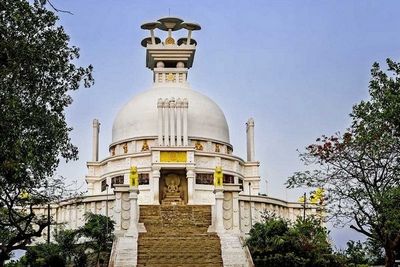
Dhauligiri
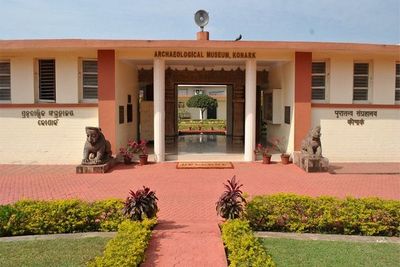
Konark Museum
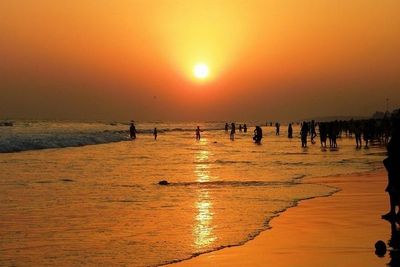
Chandrabhaga Beach
...and more
Brihadeshwar Mahadev Temple
The Brihadeshwar Mahadev Temple, located in Thanjavur, Tamil Nadu, is a captivating testament to ancient Indian architecture and spirituality. Built by the Chola dynasty during the 11th century, this UNESCO World Heritage site is a marvel of engineering and artistry. The temple’s towering vimana, or tower, stands as one of the tallest in the world, adorned with intricate carvings depicting Hindu mythology. The sanctum houses a grand Shiva Linga, attracting devotees and tourists alike. The temple’s sprawling courtyard and surrounding structures showcase the rich cultural heritage of the Chola period, making it a must-visit destination for history enthusiasts and spiritual seekers.
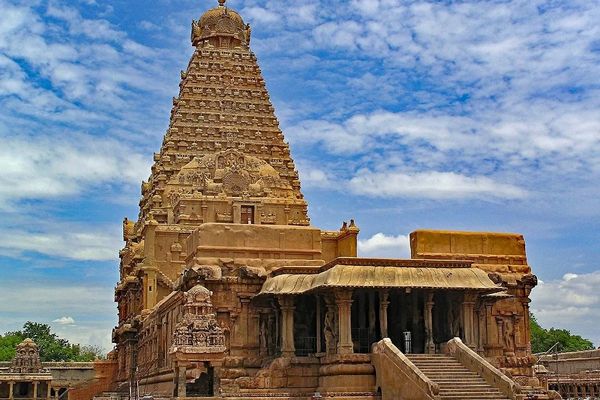
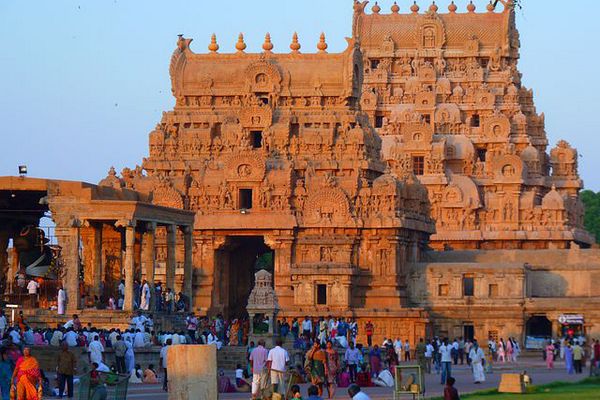
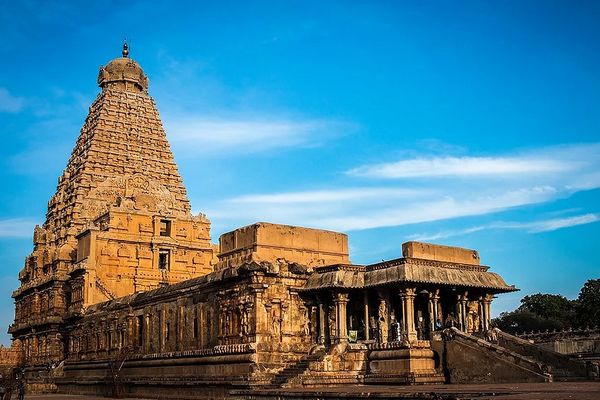
Best Time To Visit Brihadeshwar Mahadev Temple
The best time to visit the Brihadeshwar Mahadev Temple is during the winter months, from November to February. The weather is pleasant with temperatures ranging from 20 to 25 degrees Celsius, making it comfortable for exploration. During this period, the scorching heat of the summer and the heavy monsoon rains are avoided, ensuring a more enjoyable and relaxed visit to this ancient and magnificent temple. Additionally, the winter months coincide with various festivals and cultural events in the region, providing visitors with a unique opportunity to experience the rich cultural heritage associated with the Brihadeshwar Mahadev Temple.
How To Reach Brihadeshwar Mahadev Temple
Air
Nearest airport is Jolly Grant Airport in Dehradun. From there, hire a taxi or take a bus to reach Rishikesh.
Train
Rishikesh has a railway station. Take a train to Rishikesh, and then use local transport like auto-rickshaws to reach the temple.
Road
Rishikesh is well-connected by roads. Use buses, taxis, or private vehicles to reach Rishikesh, and then local transport to get to Rihadeshwar Mahadev Temple.
Nearby Places To Visit
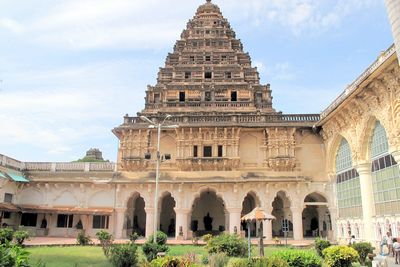
Thanjavur Palace
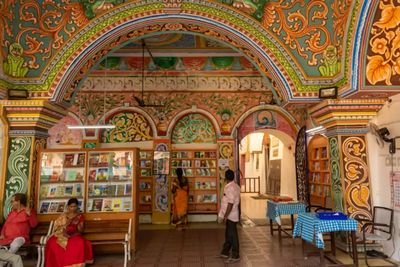
Saraswathi Mahal Library
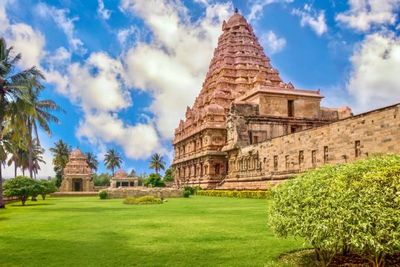
Gangaikonda Cholapuram
...and more
Khajuraho Temple
Khajuraho, a UNESCO World Heritage Site in India, is renowned for its stunning temples dating back to the Chandela dynasty (950-1050 AD). Nestled in the heart of Madhya Pradesh, these temples boast intricate, erotic carvings that showcase exquisite craftsmanship. A testament to India’s rich cultural and architectural heritage, the Khajuraho Group of Monuments attracts tourists from around the globe. The temples, dedicated to various deities, offer a glimpse into ancient Hindu and Jain artistry. Visitors marvel at the detailed sculptures and delicate design, appreciating the artistic prowess of the craftsmen. The annual Khajuraho Dance Festival further enhances the experience, making it a must-visit destination for history enthusiasts and cultural connoisseurs.
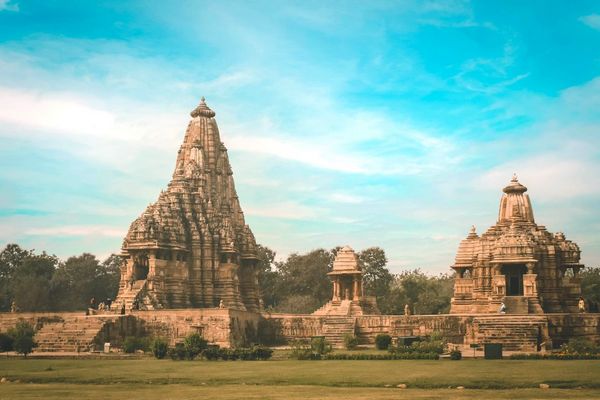
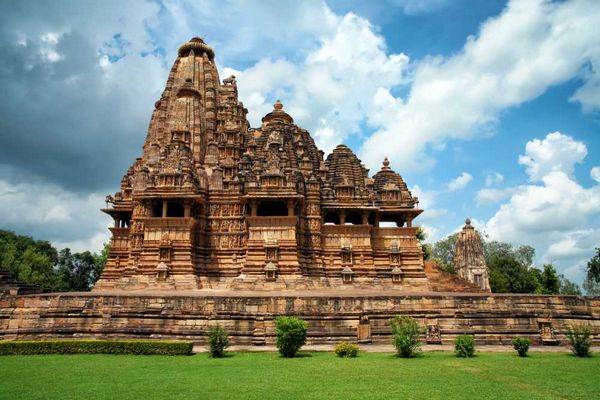
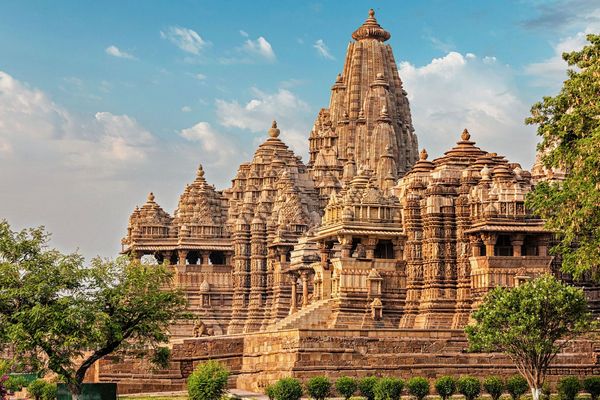
Best Time To Visit Khajuraho Temple
The best time to visit the Khajuraho Temples is during the winter months, from October to March. During this period, the weather is pleasant, with temperatures ranging from 10 to 27 degrees Celsius, making it ideal for exploring the intricate sculptures and architectural marvels of the temples. The cool and dry climate enhances the overall experience, allowing visitors to comfortably navigate the site without the discomfort of extreme temperatures. Additionally, winter months coincide with various cultural events and festivals, providing an opportunity to witness the vibrant local culture. Overall, visiting Khajuraho during winter ensures a delightful and enriching experience.
How To Reach Khajuraho Temple
Air
The nearest airport is Khajuraho Airport (HJR), with direct flights from major cities.
Train
Khajuraho Railway Station (KURJ) is well-connected to major cities.
Road
National Highway 39 links Khajuraho to nearby cities. Regular buses and taxis are available.
Nearby Places To Visit
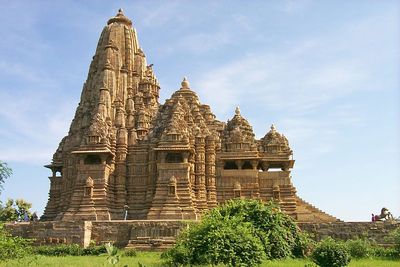
Western Group of Temples
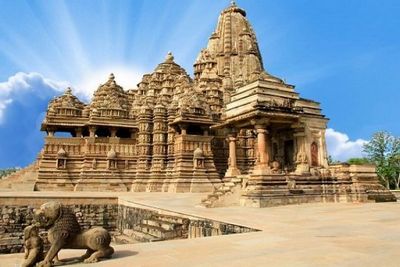
Southern Group of Temples

Panna National Park
...and more
Mahabalipuram Temple
Mahabalipuram, a UNESCO World Heritage site on the Coromandel Coast of India, beckons tourists with its mesmerizing temples. Renowned for its ancient rock-cut architecture, the temples date back to the 7th and 8th centuries during the Pallava dynasty. The Shore Temple, a jewel on the Bay of Bengal, stands as a testament to the city’s maritime history. Carved monolithic structures, such as the Five Rathas and Arjuna’s Penance, showcase intricate craftsmanship. Visitors can marvel at the intricate carvings depicting mythological tales and vibrant sculptures. Set against the backdrop of the sea, Mahabalipuram’s temples provide a captivating journey through India’s rich cultural and historical tapestry.
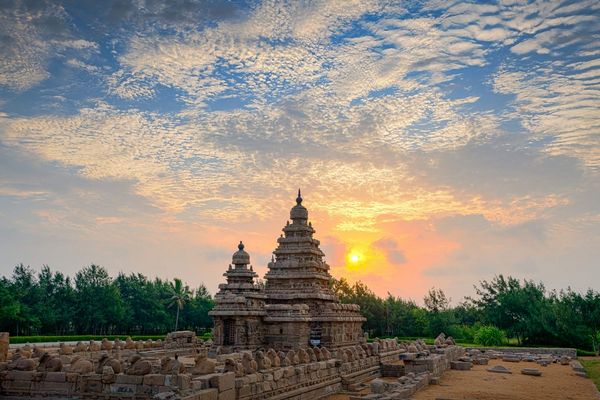
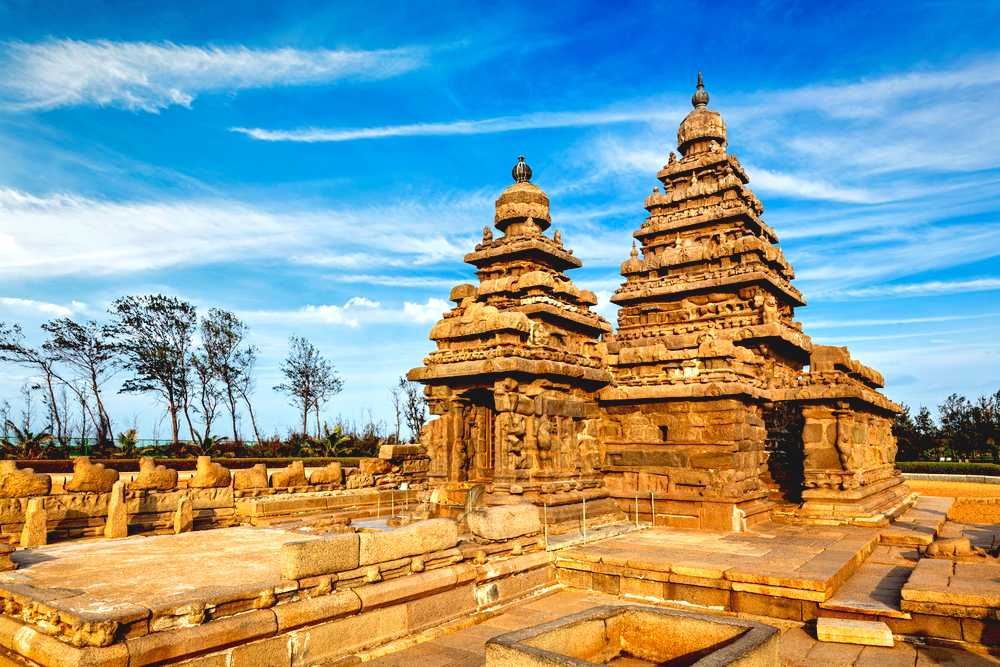
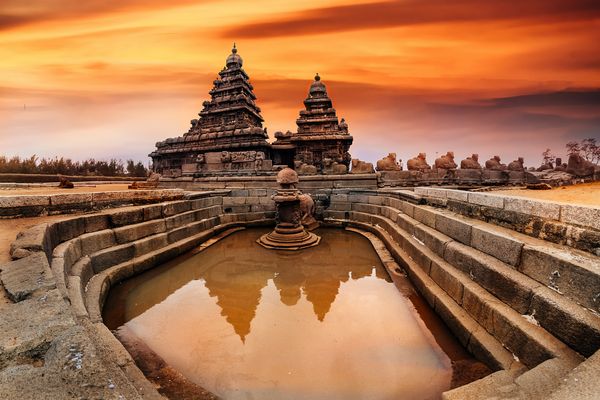
Best Time To Visit Mahabalipuram Temple
The best time to visit the Mahabalipuram Temple is during the winter months of November to February. The weather during this period is pleasant and conducive to exploring the historical marvels of the temple complex. The temperatures are moderate, ranging from 19 to 30 degrees Celsius, making it comfortable for sightseeing. Additionally, the monsoon rains have receded by November, ensuring clear skies and minimizing the risk of disruptions. The winter season allows visitors to appreciate the intricate carvings and ancient architecture of the temple without the discomfort of extreme heat or rainfall, enhancing the overall experience of this UNESCO World Heritage site.
How To Reach Mahabalipuram Temple
Air
Chennai International Airport is the nearest. Mahabalipuram is approximately 56 km away. From the airport, taxis or buses can be taken.
Train
Chengalpattu Railway Station is the closest. Mahabalipuram is around 29 km from Chengalpattu. Taxis or buses are available from the station.
Road
Mahabalipuram is well-connected by road. Chennai is about 58 km away. Buses and taxis are accessible from Chennai, and private vehicles can be driven.
Nearby Places To Visit
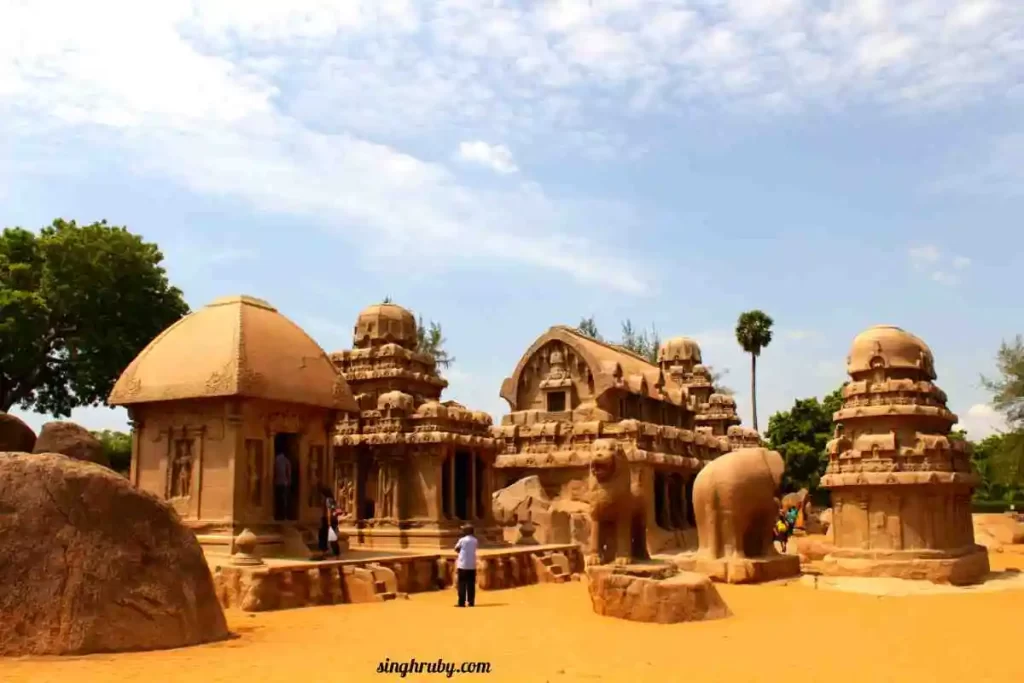
Pancha Rathas (Five Rathas)
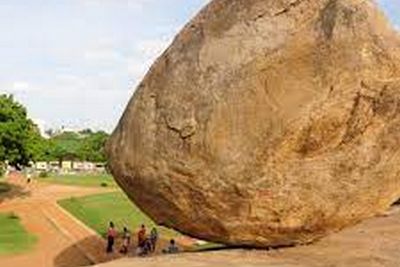
Krishna's Butter Ball
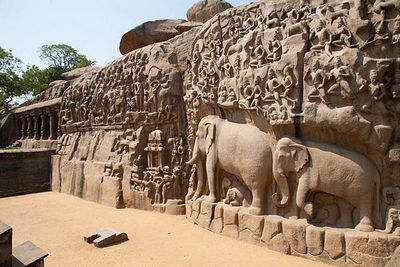
Arjuna's Penance
...and more
Jageshwar Temple
Jageshwar Temple, nestled in the serene Himalayan town of Almora, Uttarakhand, holds a profound historical and spiritual significance. Dating back to the 9th-13th centuries, this complex consists of 124 ancient temples dedicated to Lord Shiva. The architecture reflects intricate stone carvings and distinct Kumaoni craftsmanship. Legends intertwine with the temple’s origins, linking it to Hindu mythology and the myth of Lord Shiva’s marriage. Over the centuries, Jageshwar has been a revered pilgrimage site, attracting devotees and scholars alike. The site’s ancient ambiance and religious aura make Jageshwar a cultural and architectural treasure, preserving the essence of India’s spiritual heritage.
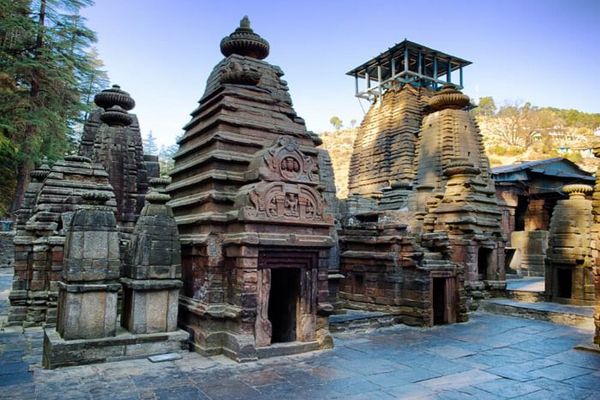
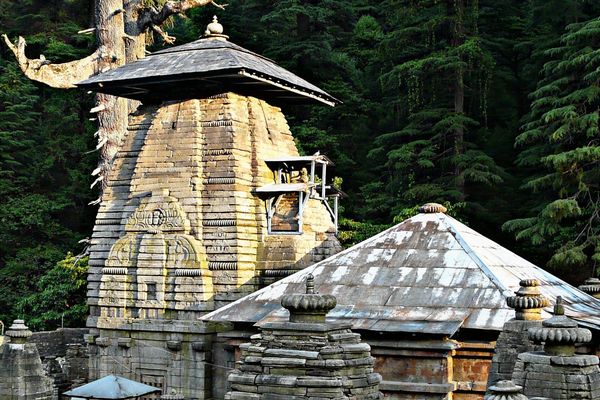
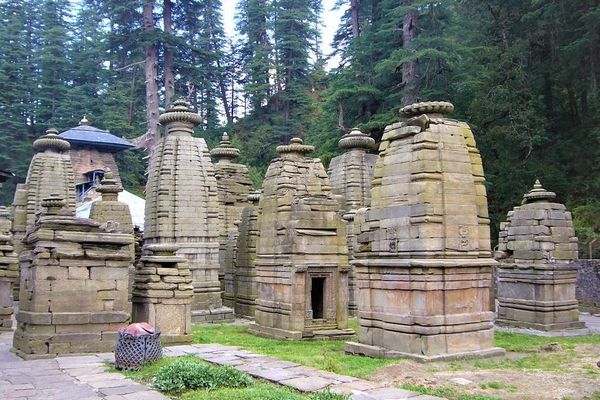
Best Time To Visit Jageshwar Temple
The best time to visit Jageshwar Temple is during the months of March to June and September to November. During these periods, the weather is pleasant, with temperatures ranging from 15°C to 30°C, making it ideal for exploring the temple complex and enjoying the natural beauty of the surrounding Deodar forests. Avoiding the monsoon season (July to August) is advisable due to heavy rainfall, which may hinder travel plans and temple visits. Additionally, the winter months (December to February) can be quite cold, with temperatures dropping significantly, making it less comfortable for outdoor activities.
How To Reach Jageshwar Temple
Air
The nearest airport is Pantnagar Airport (186 km away). From there, one can hire a taxi or take a bus to reach Jageshwar Temple.
Train
The nearest railway station is Kathgodam Railway Station (125 km away). After reaching Kathgodam, hire a taxi or take a bus to Jageshwar Temple.
Road
Jageshwar is well-connected by road. Regular buses and taxis are available from major cities in Uttarakhand. It can also be reached by driving through scenic routes.
Nearby Places To Visit

Binsar Wildlife Sanctuary
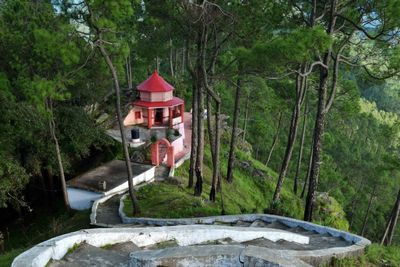
Kasar Devi Temple
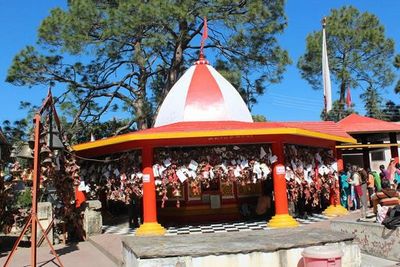
Arjuna's Penance
...and more
Dilwara Temples
Dilwara Temples, located amidst the lush Aravalli hills near Mount Abu in Rajasthan, India, stand as a masterpiece of marble craftsmanship and Jain architecture. Constructed between the 11th and 13th centuries, these five temples—Vimal Vasahi, Luna Vasahi, Pittalhar, Parshvanath, and Mahavir Swami—showcase intricate carvings, detailed friezes, and stunning domes. The white marble exudes a timeless charm, and each temple narrates tales of spiritual devotion. The Vimal Vasahi temple, dedicated to the first Jain Tirthankara, is particularly renowned for its delicate beauty. As a must-visit destination for tourists, Dilwara Temples offer a serene escape, blending architectural brilliance with religious significance.
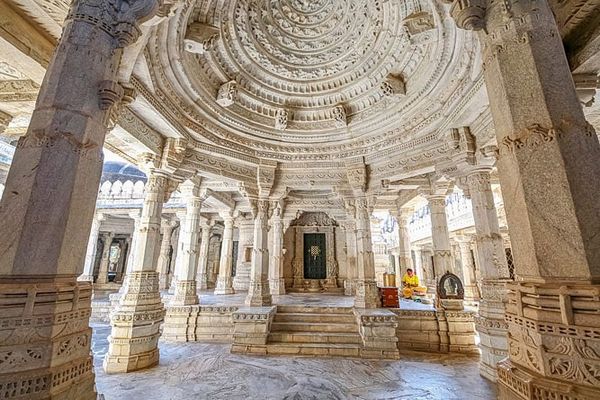
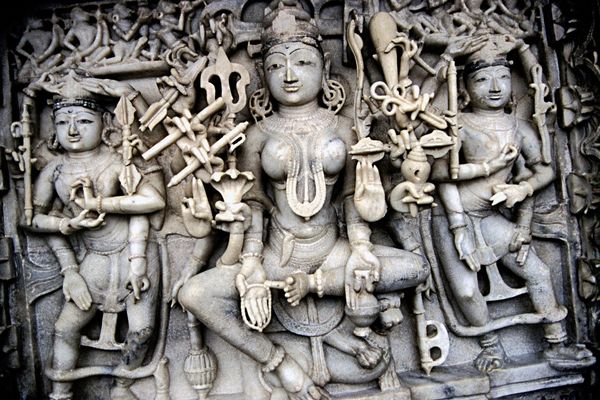
Best Time To Visit Dilwara Temples
The best time to visit the Dilwara Temples is during the months of September to March. This period offers pleasant weather with temperatures ranging from 12°C to 25°C, making it ideal for exploring the intricate marble architecture of these renowned Jain temples. The monsoon season (July to September) should be avoided due to heavy rainfall, while the summer months (April to June) can be hot and less comfortable for sightseeing. Choosing the cooler months allows visitors to fully appreciate the beauty of the temples without the discomfort of extreme weather conditions.
How To Reach Dilwara Temples
Air
The nearest airport is Udaipur Airport (UDR), approximately 27 km away. From the airport, take a taxi or bus to reach Dilwara Temples.
Train
Abu Road Railway Station is the nearest, about 28 km away. From there, take a taxi or bus to reach Dilwara Temples.
Road
Dilwara Temples are well-connected by roads. You can reach by bus or taxi from nearby cities like Udaipur and Mount Abu.
Nearby Places To Visit
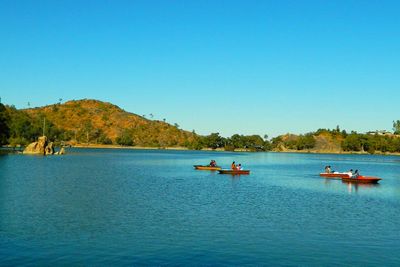
Nakki Lake

Mount Abu Wildlife Sanctuary
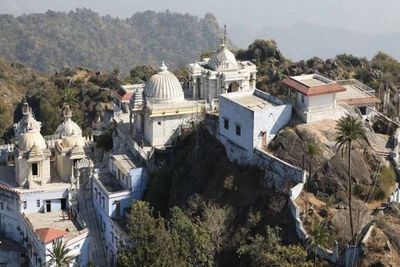
Achalgarh Fort
...and more
Virupaksha Temple
The Virupaksha Temple in Hampi, Karnataka, stands as a majestic testament to India’s rich cultural and architectural heritage. Dating back to the 7th century, this UNESCO World Heritage Site is dedicated to Lord Shiva and is a must-visit destination for history enthusiasts and spiritual seekers alike. The temple complex, adorned with intricate carvings and towering gopurams, offers a mesmerizing blend of Dravidian and Vijayanagara architectural styles. Pilgrims and tourists are drawn to the sacred sanctum where rituals have been performed for centuries. The annual Hampi Utsav further enhances the experience, showcasing the vibrant traditions and folklore of the region.
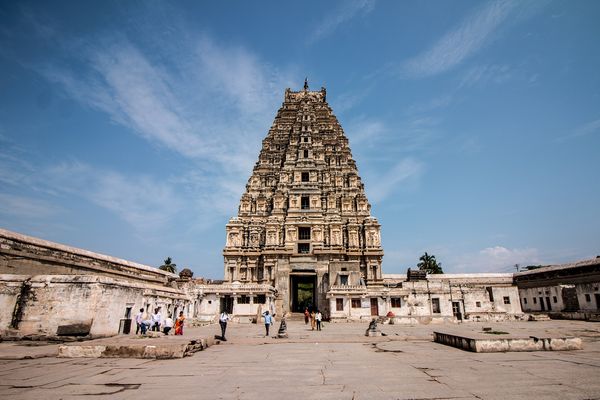
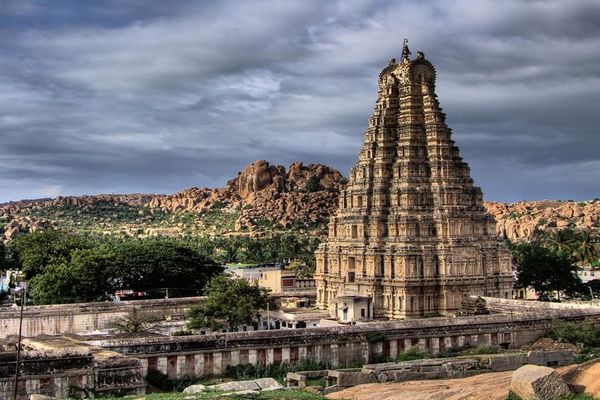
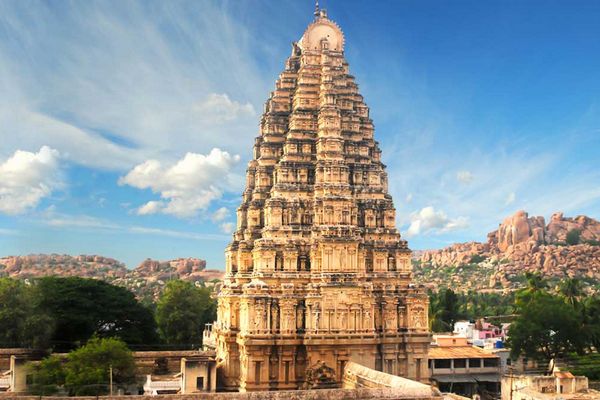
Best Time To Visit Virupaksha Temple
The best time to visit Virupaksha Temple is during the winter months, from October to March. The weather during this period is pleasant and comfortable, with temperatures ranging from 15°C to 30°C. The monsoon season, from June to September, should be avoided due to heavy rains that can disrupt travel plans and make exploration challenging. Additionally, the scorching summer months, from April to June, can be uncomfortably hot, with temperatures soaring above 30°C. The winter months offer an ideal climate for exploring the temple and the surrounding archaeological wonders of Hampi, enhancing the overall visitor experience.
How To Reach Virupaksha Temple
Air
The nearest airport to Virupaksha Temple is Jindal Vijaynagar Airport (VDY). From the airport, you can hire a taxi or use public transport to reach the temple.
Train
The nearest railway station is Hospet Junction. From Hospet, Virupaksha Temple is accessible by taxi or bus, with a travel time of approximately 30 minutes.
Road
Virupaksha Temple is well-connected by road. Hampi, where the temple is located, is accessible by buses and taxis from major nearby cities like Hospet.
Nearby Places To Visit
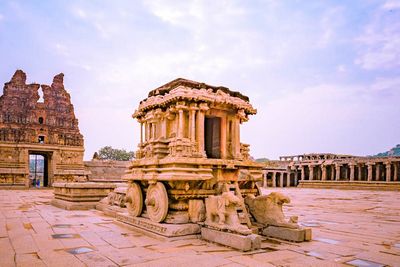
Vittala Temple
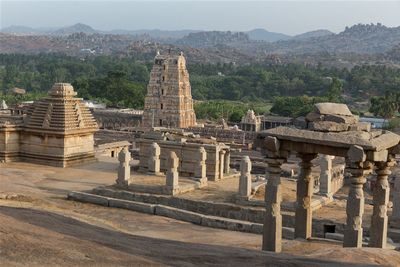
Hemakuta Hill
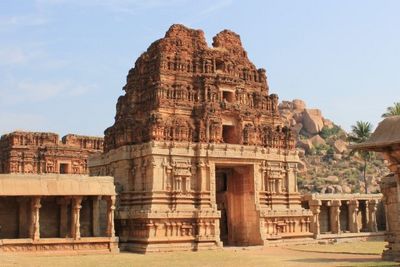
Achyutaraya Temple
...and more
Ramanathaswamy Temple
Ramanathaswamy Temple, a revered Hindu shrine situated on Rameswaram Island in Tamil Nadu, India, is a captivating destination for tourists seeking spiritual and architectural experiences. Built in the Dravidian style of architecture, the temple boasts a remarkable corridor with over 1,200 intricately carved pillars, spanning a length of 6,000 feet—a spectacle that leaves visitors in awe. The temple holds immense religious significance as one of the twelve Jyotirlinga shrines dedicated to Lord Shiva. Pilgrims also believe that a sacred dip in the Agni Theertham, a nearby sea, absolves sins. The temple’s historical roots and architectural grandeur make it a must-visit destination for cultural enthusiasts and spiritual seekers alike.
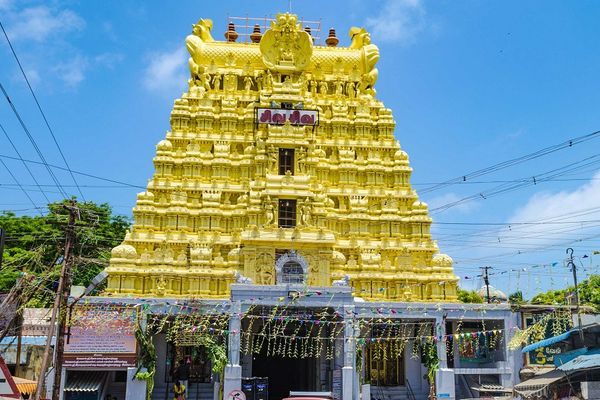
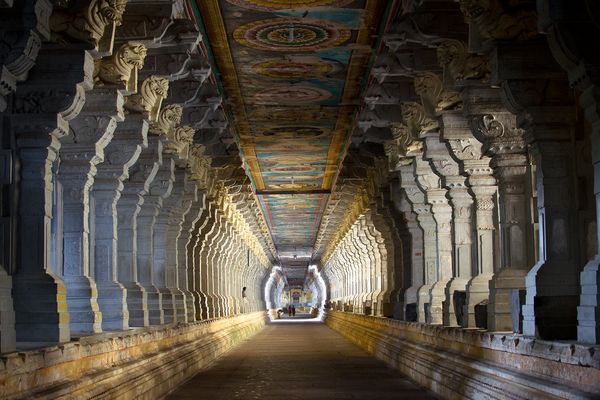
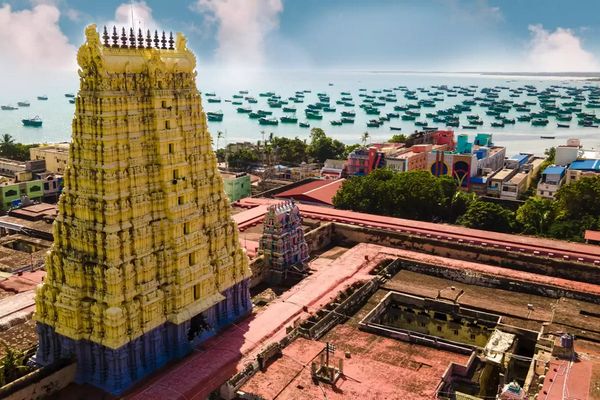
Best Time To Visit Ramanathaswamy Temple
The best time to visit Ramanathaswamy Temple is during the winter months of October to March. During this period, the weather is pleasant, with temperatures ranging from 17 to 30 degrees Celsius, providing a comfortable environment for exploration. Additionally, the festival of Masi Sivaratri in February-March attracts numerous devotees, offering a culturally vibrant experience. It is advisable to avoid the monsoon season (July to September) due to heavy rainfall, which may disrupt travel plans. Choosing the winter season ensures an enjoyable pilgrimage, allowing visitors to immerse themselves in the spiritual and architectural marvels of this sacred Hindu temple in Rameswaram, Tamil Nadu.
How To Reach Ramanathaswamy Temple
Air
Nearest airport is Madurai Airport (IXM), approximately 175 km away. From there, take a taxi or bus to reach Ramanathaswamy Temple.
Train
Rameswaram Railway Station is well-connected. Trains from major cities like Chennai and Madurai provide convenient access to Ramanathaswamy Temple.
Road
Well-maintained road network connects Rameswaram. National Highway 87 offers a scenic drive. Buses and taxis are available from nearby cities for road travel.
Nearby Places To Visit
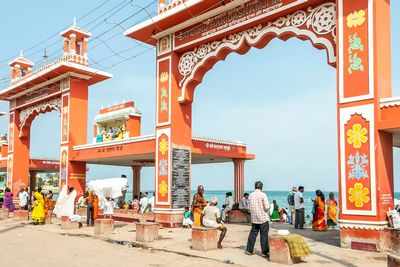
Agnitheertham

Dhanushkodi
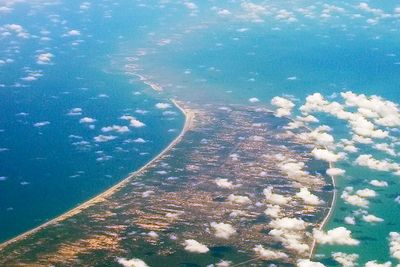
Rama Setu (Adam's Bridge)
...and more
Meenakshi Temple
The Meenakshi Temple, located in Madurai, Tamil Nadu, is a historical marvel that dates back to the 6th century. Dedicated to Goddess Meenakshi (Parvati) and her consort Lord Sundareswarar (Shiva), the temple underwent significant expansions by various rulers, including the Nayak dynasty in the 16th century. Its towering gopurams (entrance towers) and intricate sculptures reflect Dravidian architecture at its zenith. Legend intertwines with history, claiming that Meenakshi emerged from a sacred fire, and her wedding with Lord Shiva is celebrated annually in a grand festival. The Meenakshi Temple stands as a spiritual and architectural icon, attracting pilgrims and admirers worldwide.
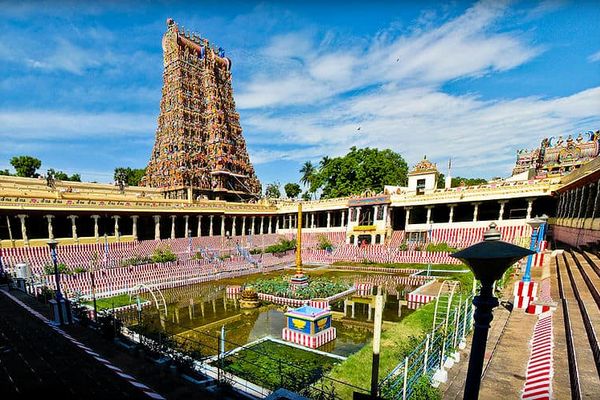
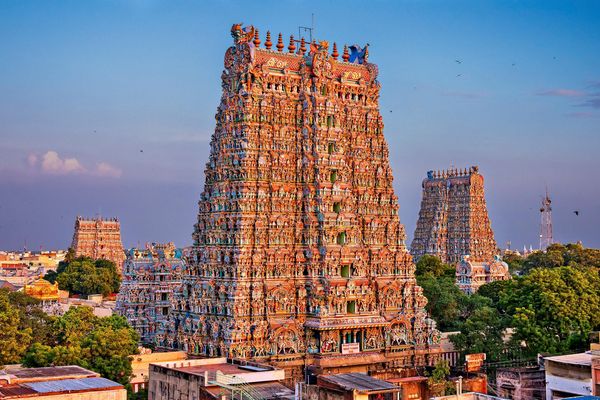
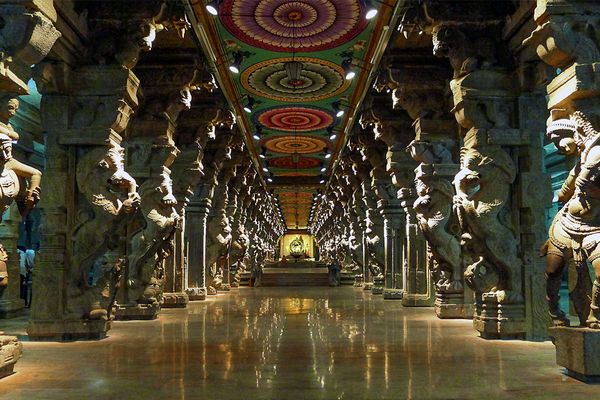
Best Time To Visit Meenakshi Temple
The best time to visit Meenakshi Temple is during the months of October to March, when the weather is pleasant and conducive for exploration. During this period, the temperatures are relatively cooler, ranging from 20°C to 30°C, ensuring a comfortable and enjoyable visit to this magnificent Hindu temple in Madurai, Tamil Nadu, India. The festival of Chithirai, usually in April, is also an ideal time to witness the grandeur of Meenakshi Temple, as it hosts the famous Chithirai Thiruvizha, a ten-day celebration attracting pilgrims and tourists alike. Plan your visit during these months to experience the cultural richness and architectural marvel of this iconic temple.
How To Reach Meenakshi Temple
Air
Fly to Madurai Airport. Meenakshi Temple is 12 km away. Take a taxi or use public transport for a 30-minute journey to reach the temple.
Train
Arrive at Madurai Junction. The temple is 2 km away. Take a taxi or use local transportation for a quick 10-minute journey to reach Meenakshi Temple.
Road
Use NH44 or other connecting roads to reach Madurai. Meenakshi Temple is centrally located. Take a taxi, auto-rickshaw, or walk to easily access the temple.
Nearby Places To Visit
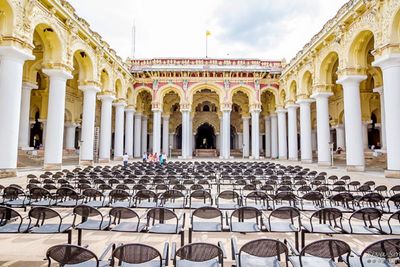
Thirumalai Nayakkar Palace
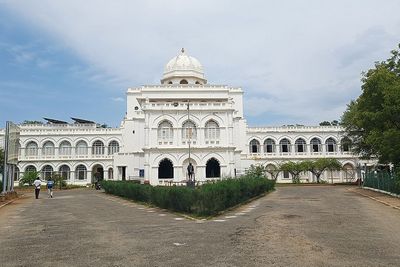
Gandhi Memorial Museum
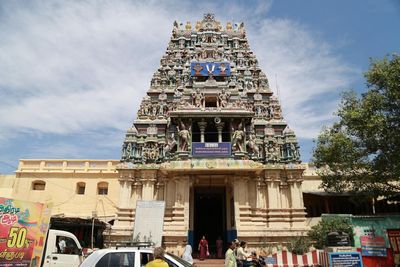
Koodal Azhagar Temple
...and more
Ranakpur Jain Temple
Nestled in the picturesque Aravalli Range of Rajasthan, the Ranakpur Jain Temple is a mesmerizing architectural marvel that beckons tourists seeking spiritual solace and cultural richness. Renowned for its intricate marble craftsmanship, this 15th-century temple is dedicated to Tirthankara Adinatha. Adorned with 1,444 intricately carved pillars, each unique in design, the temple creates a celestial ambiance, where visitors can marvel at the divine beauty of its domes and sculptures. Surrounded by lush greenery, the temple provides a serene escape from the bustling world, inviting tourists to immerse themselves in the tranquility and historical significance of this sacred site.
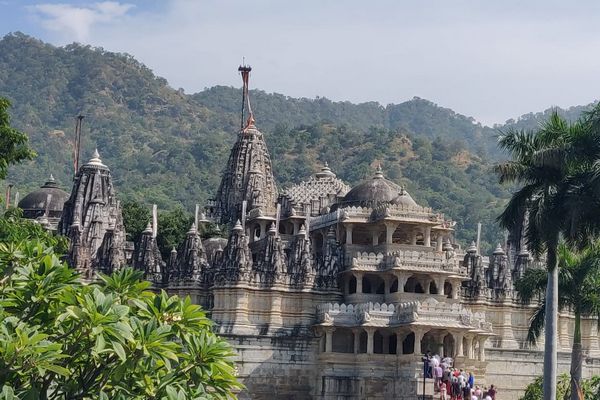
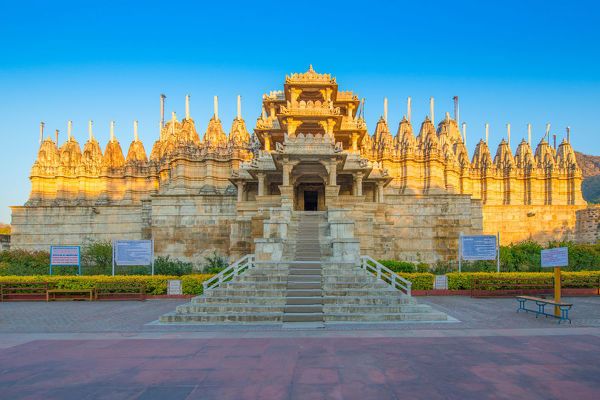
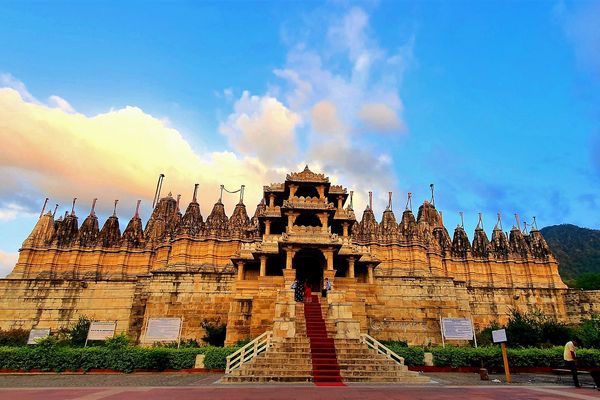
Best Time To Visit Ranakpur Jain Temple
The best time to visit Ranakpur Jain Temple is during the winter months, from October to March. During this period, the weather is pleasant, with temperatures ranging from 10°C to 27°C, providing a comfortable environment for exploring the intricacies of this architectural marvel. The cool and dry climate enhances the overall experience of the visit, allowing tourists to appreciate the intricate marble carvings and stunning architecture without the discomfort of extreme temperatures. Additionally, the winter season coincides with various festivals, adding a cultural vibrancy to the surroundings, making it an ideal time to witness the grandeur of Ranakpur Jain Temple.
How To Reach Ranakpur Jain Temple
Air
The nearest airport is Maharana Pratap Airport (Udaipur). From the airport, hire a taxi or use public transport to reach Ranakpur Jain Temple.
Train
The nearest railway station is Falna Railway Station. From Falna, hire a taxi or use local transport to reach Ranakpur Jain Temple.
Road
Ranakpur is well-connected by road. You can take a bus or hire a taxi from nearby cities like Udaipur or Jodhpur to reach Ranakpur Jain Temple.
Nearby Places To Visit
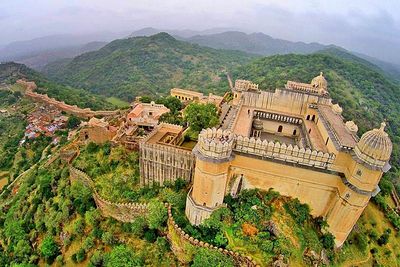
Kumbhalgarh Fort
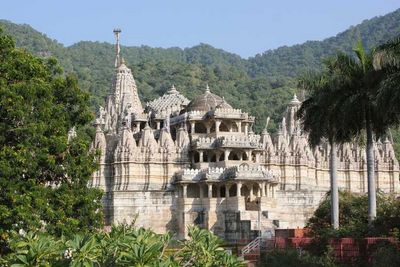
Muchhal Mahavir Temple
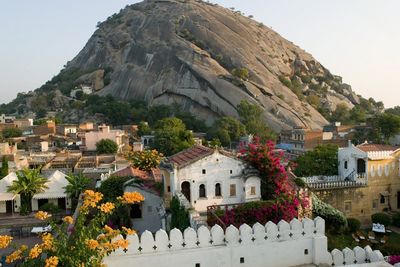
Narlai Village
...and more
GET A FREE QUOTE
Feel free to get in touch with our team of wildlife experts and receive a free quote for your next tiger safari holiday! You could also use this channel to request for a custom wildlife holiday package in India!
Frequently Asked Questions
ome of the must-visit cultural destinations in India during your cultural and wildlife tour include the Taj Mahal in Agra, Jaipur’s palaces and forts, Varanasi’s spiritual sites, and the cultural heritage of cities like Delhi and Udaipur. For wildlife enthusiasts, national parks like Ranthambore, Kaziranga, and Jim Corbett offer incredible biodiversity.
The ideal time for a cultural and wildlife tour in India depends on your preferences and the regions you plan to explore. Generally, the winter months (October to March) offer pleasant weather for most parts of India. However, wildlife enthusiasts may prefer visiting national parks during the cooler months, while cultural tours can be enjoyed year-round.
India boasts incredible wildlife diversity. During wildlife tours, you can spot iconic species like Bengal tigers, Indian elephants, Indian rhinoceroses, leopards, and various bird species. Each national park and region has its unique fauna and flora, making India a wildlife enthusiast’s paradise.
Yes, cultural and wildlife tours in India can be family-friendly. Many tour operators offer family-oriented itineraries that include educational activities and interactions with local communities. However, it’s essential to consider the age and interests of your children and choose destinations and activities accordingly.
Packing essentials for a cultural and wildlife tour in India include comfortable clothing suitable for the season and region you’re visiting, sturdy walking shoes, insect repellent, sunscreen, a hat, a reusable water bottle, a camera with extra batteries, any necessary medications, and a power bank for charging electronic devices. Additionally, it’s wise to check specific packing recommendations with your tour operator based on your itinerary.

